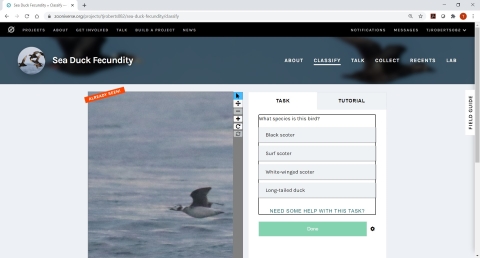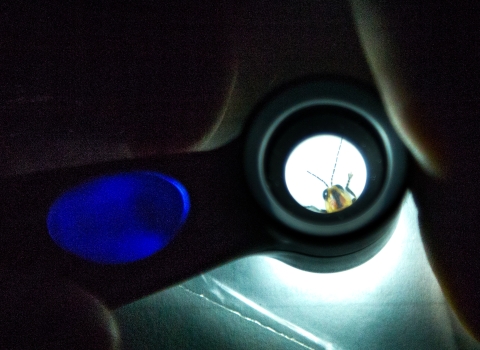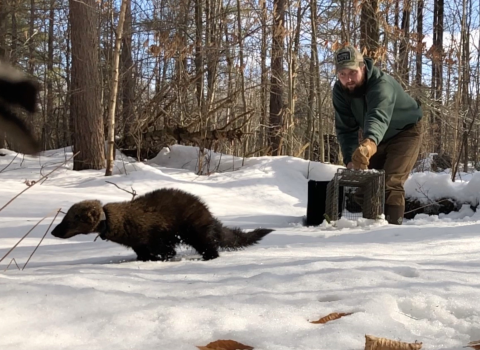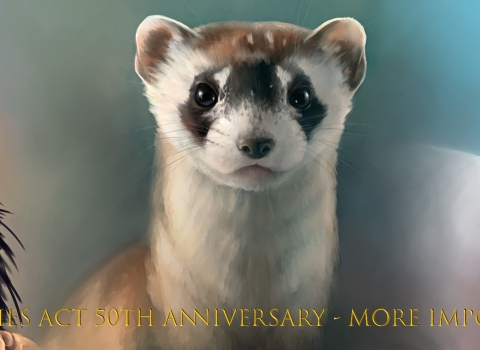You might be familiar with the usual ways that we biologists collect population information on migratory birds: we catch birds and place bands on them to estimate survival, collect information on how many birds have been harvested or hunted, and conduct widespread population counts. But for some species, we just aren’t able access their habitats to count or capture them accurately and we really have to think outside the box on how best to monitor them. This may involve using new tools, and old ones in new ways, to collaboratively address issues of management concern.
Sea ducks (Tribe Mergini) are a group of waterfowl species that we consider quite difficult to study. It is extremely challenging to accurately estimate population abundance and demographic information because their breeding areas are awfully remote and they winter off shore in areas that are difficult to access. It is because of this need that recent population modeling work done by U.S. Fish & Wildlife Service Migratory Bird Program biologists has identified an informational gap: if we had more precise estimates of annual sea duck breeding success, we could improve our models and therefore, our ability to make the most scientifically sound management decisions in regards to harvest of sea ducks in eastern North America. This would improve our management decisions and support continued sustainable recreational hunting opportunities.
Currently, age ratio estimates for sea duck species are derived from both U.S. Fish & Wildlife Service and Canadian Wildlife Service parts collection survey (PCS) data, but those estimates can be biased due to 1) juveniles being more vulnerable to harvest and 2) small sample sizes of wings from these low-harvest species. However, adult sea ducks have different plumage than juveniles that can help us assign birds to different age classes. This makes it easier to estimate the number of juveniles based on visual observations. We currently use visual surveys to annually estimate the number of juveniles for species such as Atlantic brant (Branta bernicla bernicla), tundra swans (Cygnus columbianus), and sandhill cranes (Antigone canadensis). The problem arises when we try and translate this same method to sea ducks, as we can’t identify the relevant plumages when the birds are sitting on the water, and we can’t get birds in-hand without significant effort and resources. However, there is another tool that’s been around awhile that could really help solve this issue: photography.
Biologists can take photos of flying birds when real-time identification is too difficult and unreliable. Age differences can be reliably assessed based on plumage characteristics of many sea ducks, including important species in eastern North America of black scoters (Melanitta americana), surf scoters (M. perspicillata), white-winged scoters (M. deglandi), and long-tailed ducks (Clangula hyemalis), but these differences are difficult to do on birds in real-time. For example, accurate identification of the plumage differences between adult female and juvenile scoters is really difficult when large flocks are flying by at full speed. While adult males are easily distinguished from adult females and juveniles, the most distinguishing feature between the adult female and juvenile scoters is on the belly of the bird, a difficult marking to see when birds are in the water. Separating these two groups comes down to this: juveniles have light-colored feathers on their underside, but adult females have uniform coloration on their bellies. In this case “boots and binos” biology, or using a camera with a zoom lens as they fly overhead, is the best survey method, a win for field biologists!
With this knowledge in hand, we collaborated with the coastal states in the Atlantic Flyway to design and conduct a photographic survey of wintering sea ducks. The goal of the survey was to obtain an annual estimate of proportion of juvenile birds in the population with adequate precision for use in population models of the target species. The photo survey was conducted by state agencies, volunteer birders, and amateur photographers during the 2018-19 and 2019-20 winter seasons. When the survey period ended, all photos were sent to the U.S. Fish and Wildlife Service for processing. During the first two years of the survey, these dedicated partners collected over 1,200 photos containing over 4,000 birds!
Photo processing has come a long way from when I first started using Microsoft Paint to add colorful arrows pointing out interesting landmarks, or adding mustaches to friend’s faces. There are a myriad of products now that allow photographers to enhance and manipulate photos with the finest detail. Fortunately, we only had to cut individual birds from photos of flocks and enhance lighting and contrast to improve identification. But we had to do it for thousands of photos, then provide the resulting photos to numerous biologists to identify the age and sex of the birds. We don’t have the expertise to bring artificial intelligence in to help, but we can use other software to improve data processing. Once we had a set of photos processed, we uploaded them to zooniverse.com. Zooniverse is an online platform for researchers to engage with, and utilize the brainpower of, the general public. The platform is designed to “enable research that would not be possible, or practical, otherwise.” Photos are put on the site in an organized project, participants are given some introductory material, and then can contribute to research, on their own computer, at their own convenience. Examples of projects include classifying images of galaxies, transcribing words and phrases in historical documents, or identifying species caught in camera traps. In comparison to some projects on the site, our request was fairly simple: identify the sea duck species and its cohort – adult male, adult female, or juvenile. We had great feedback from people we invited to participate in the identification and classification process. People were able to submit their results much more quickly than other methods we tried. We used the resulting set of classifications to assign likelihoods of species and cohort to all birds and then estimate age ratios. The results were in-line with expected estimates based on life-history, and provided precise estimates for us to use.
To ground-truth our analysis, we then compared our estimates of age ratios using the photos, with that of the parts collection survey data estimates. What we found was that parts collection survey age ratios were higher than those from the photo survey, which was expected because juveniles are likely more susceptible to hunting than adult females. The other interesting initial result was that the scoter species had higher age ratios (more juvenile birds) in 2019 compared to 2018. This same pattern was seen in several other waterfowl species that breed in arctic and tundra ecosystems, similar to the scoters. For example, Atlantic brant, greater snow geese, and tundra swans all had greater breeding success in 2019 compared to 2018. This indicates that some environmental conditions in the arctic had broad-scale impacts on multiple species. What factors influence these annual changes are yet to be determined. We think the results of this photo survey represent a new and efficient way to estimate annual age ratios of sea ducks. The use of tools old and new, and the collaboration of experts and novices alike, made the project effective and efficient.



